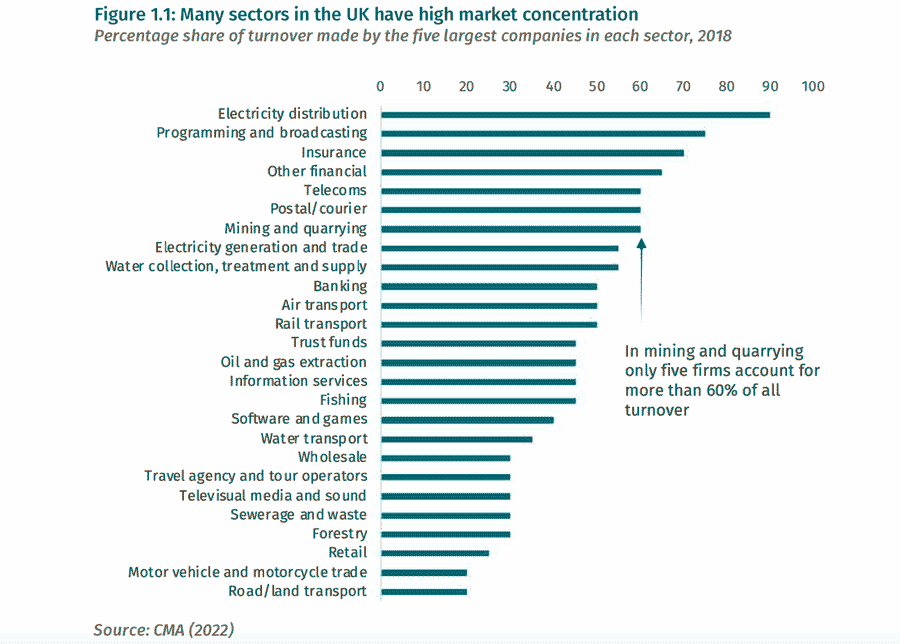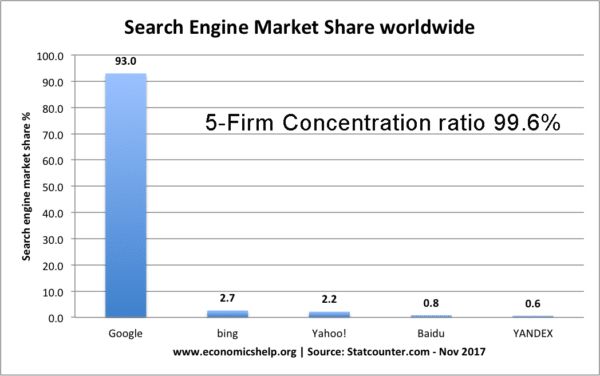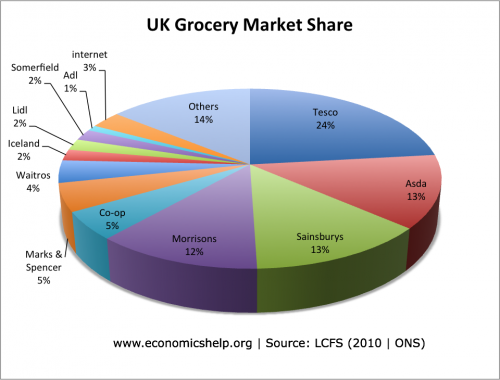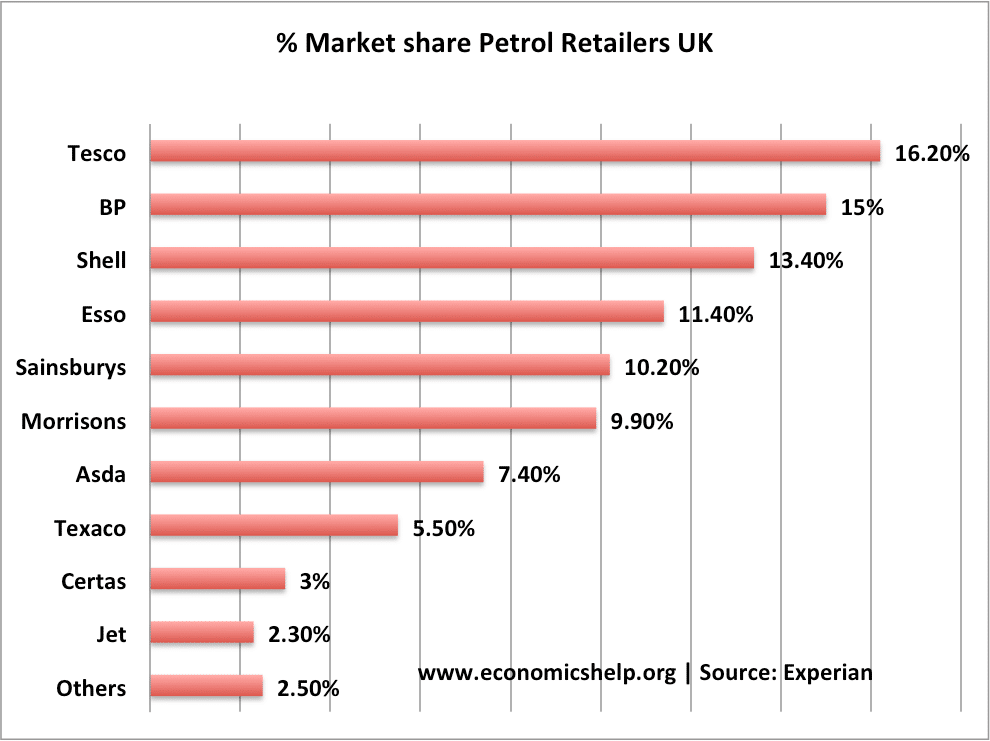Definition of Concentration Ratios
The percentage of market share taken up by the largest firms. It could be a 3 firm concentration ratio (market share of 3 biggest) or a 5 firm concentration ratio.
Concentration ratios are used to determine the market structure and competitiveness of the market. For example, an oligopoly is defined when there is a 5-firm concentration ratio of greater than 50%
Importance of concentration ratios
The degree of competition. If the five-firm concentration ratio rises from 40% to 60%, this is an indication of a fall in competitive pressures. It could lead to higher prices for consumers
Indicate monopoly power. In the UK, the legal definition of a monopoly is a firm with more than 25% market share. Any firm over this threshold has an important market position.
Regulatory oversight. If there is a three-firm concentration ratio of over 80%, then there is greater scope for collusion and abuse of monopoly power. In this kind of industries, the government may need to use a regulator to check monopoly power isn’t being abused. For example, the government has a regulator for railways, electricity and gas – where the market is dominated by a few small firms.
Concentration ratios and contestability
One feature of concentration ratios is that they do not indicate the level of contestability. A contestable market has freedom of entry and exit. The threat of competition is sufficient to keep prices low – even if the concentration ratio is quite high.
Examples of market concentration in the UK

This is from a study by the Competition and markets authority into the market share of UK industries. It shows that in electricity distribution the five largest firms controlled nearly 90% of market share. The most competitive markets were retail, motor vehicle trade and road/land transport.
Market share of UK petrol stations
- In the UK retail petrol industry, there is five-firm concentration ratio of 66%
- There is a three-firm concentration ratio of 44%
- The growth of supermarkets selling petrol has made the market more competitive – especially because supermarkets are willing to sell petrol at a competitive pressure to attract customers to shop at the supermarket.
Search Engine market share

Note: I have seen other measures which put Google on closer to 80% of market share. This is from Statcounter.com own aggregate statistics.
UK Supermarket industry

The five firm concentration ratio for the industry is 66% – a case of an oligopoly.
- Tesco – 23%
- Asda 13%
- Sainsbury’s 13%
- Morrisons 12%
- Co-op 5%
- Marks & Spencers – 5%
- Waitrose – 4%
- Iceland – 2%
- Lidl – 2%
- Somerfield – 2%
- Aidl – 1%
- internet – 3%
- Others – 14%
Related

